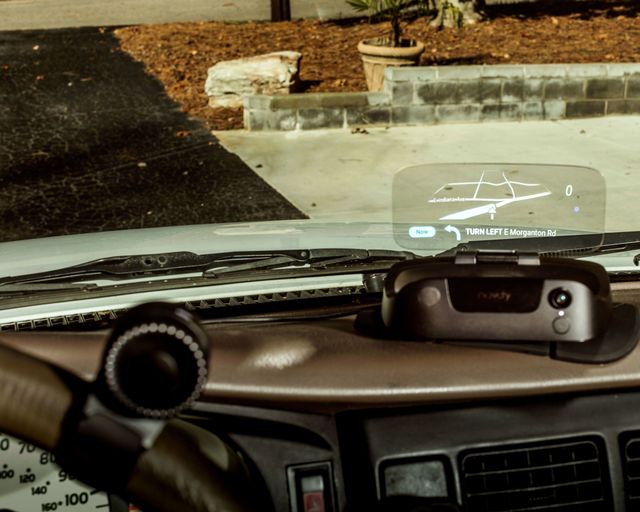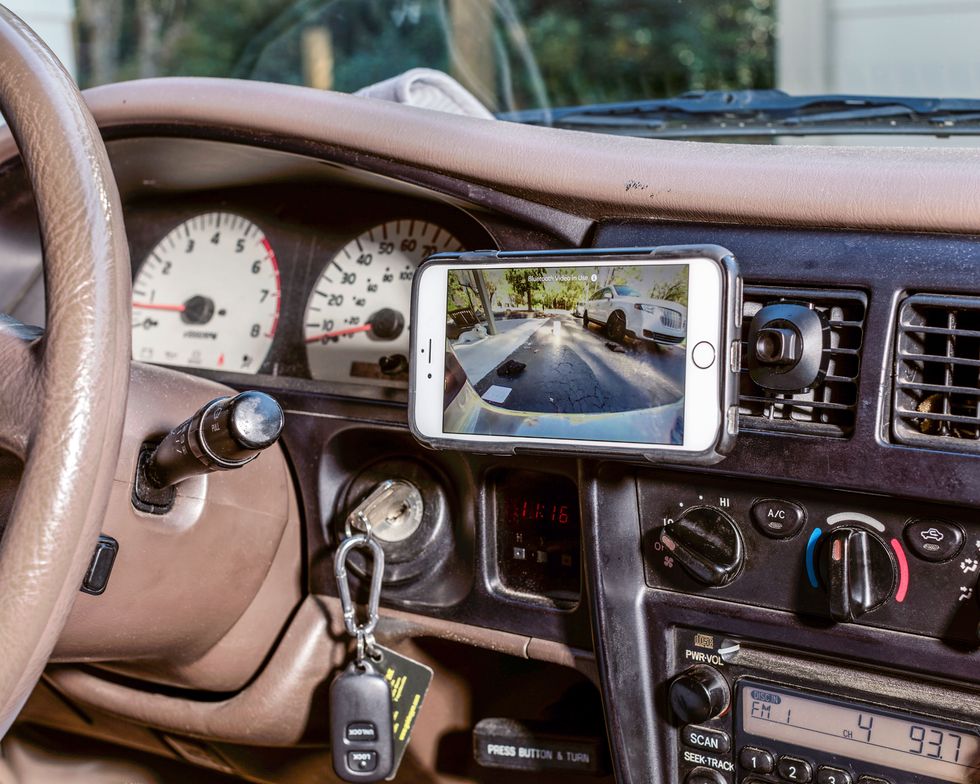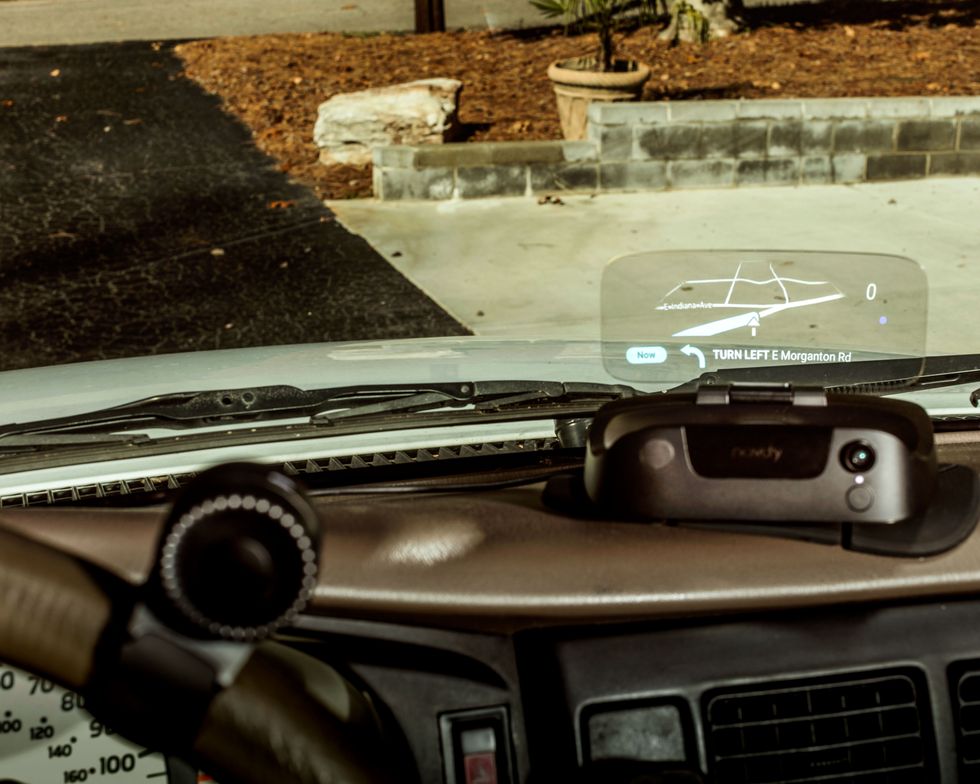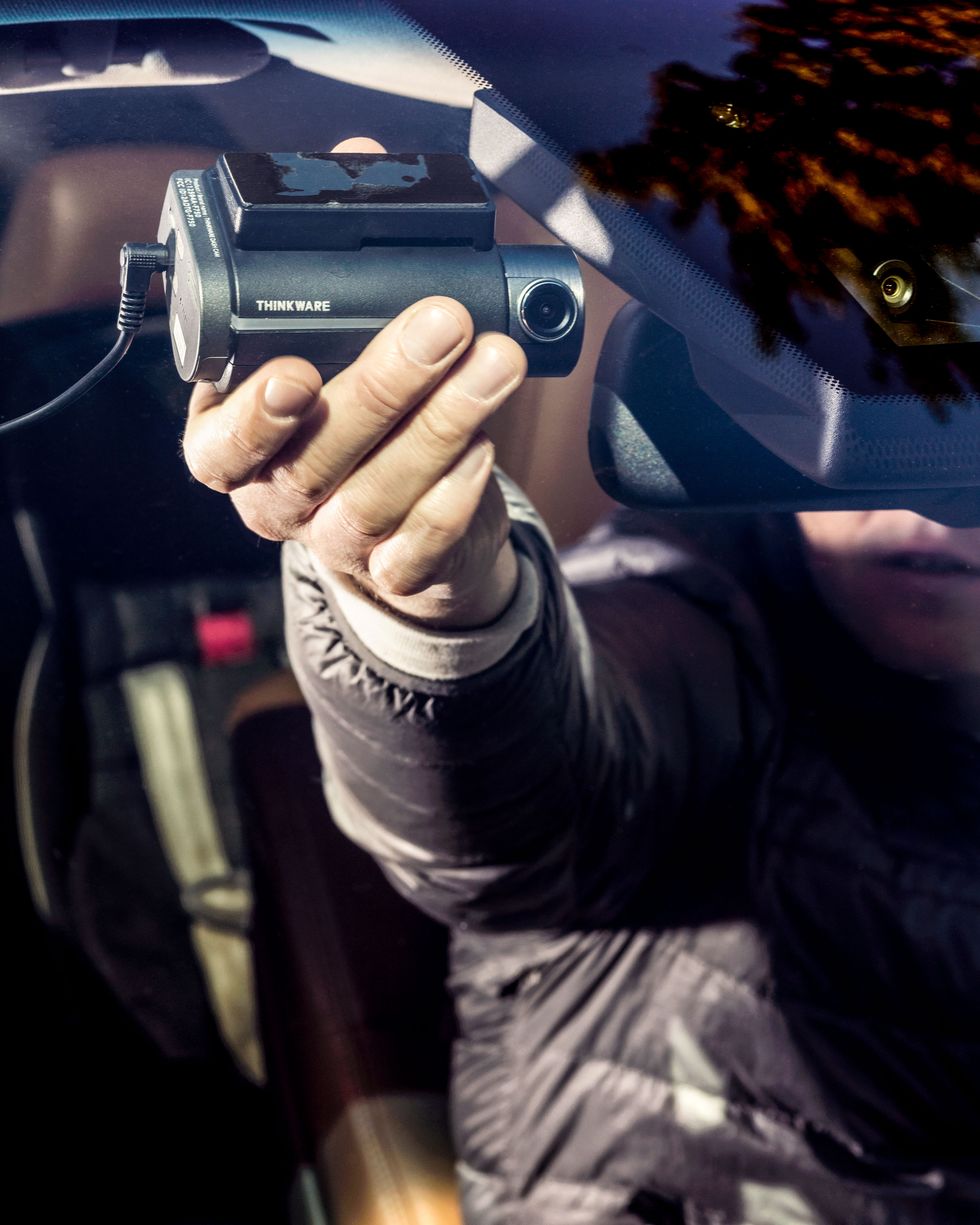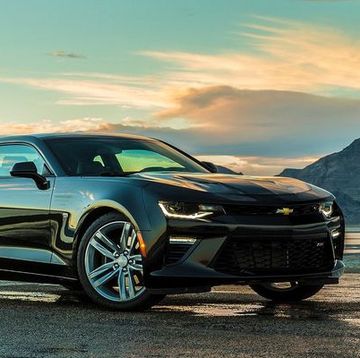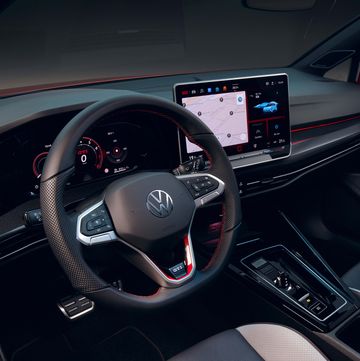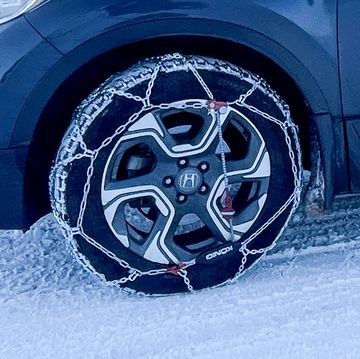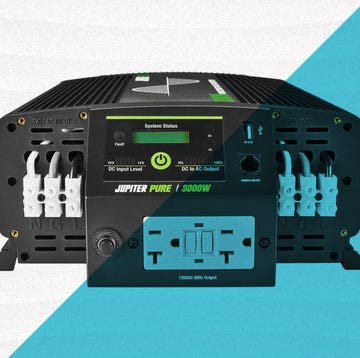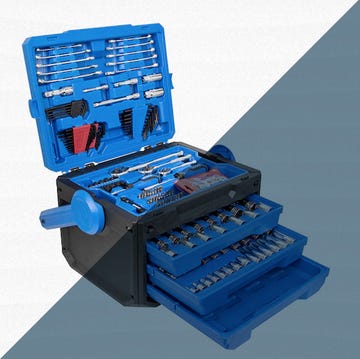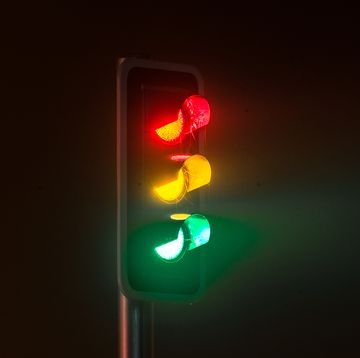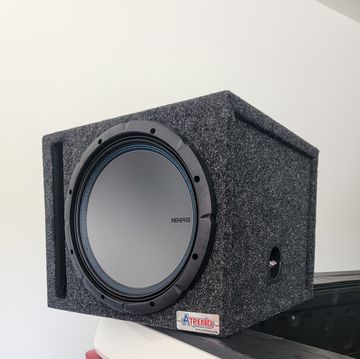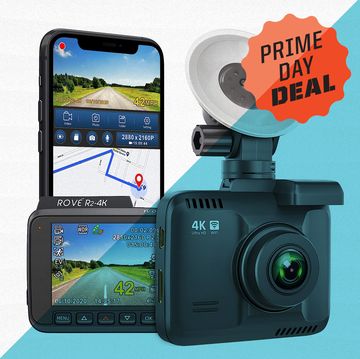My sister-in-law just replaced her 2005 Chevy Suburban with a 2017 GMC Yukon XL. Twelve years between them, the mechanical parts are the same: 5.3-liter V-8 under the hood, ladder frame under the body, solid axle out back. The electronics, though, are a different story—she went from a CD player to Apple's CarPlay, from a key fob to remote locking via app.
In the last five years, in-car electronics have become the biggest difference between new and old. But can you give otherwise functional older cars the best of what's new? Maybe you could wring a few more years out of the beast, and be safer while you're at it. To test my theory, I outfitted a friend's 2002 Toyota Tacoma and my 2010 Lincoln MKT with new devices designed to replicate factory-installed modern conveniences. Old cars, meet new tricks.
A Backup Camera
Last year, I tested a hard-wired aftermarket backup camera on my 1993 Bronco. When I finished, I ripped it out. The poor resolution and suction-cup display weren't worth the trouble. The Pearl ($500) solves the display issue by using the high-resolution screen we all carry in our pockets. No wiring needed—it runs on solar panels.
The cameras are built into a license-plate frame, so the Tacoma's plate screws hold the Pearl. Plug in the OBD dongle, affix the dash phone mount (clipped to a vent or with adhesive), download the app, and you're ready.
Once paired, the system works flawlessly. The two cameras provide stereo vision that allows distance-based object warnings—the edge of the screen glows red and there's an audible alert when you're about to hit something—and one of the cameras is optimized for low-light conditions. The app boots quickly, and the resolution is better than most factory setups I've tested. One demerit: The system doesn't know when you're in reverse, so you've got to activate it manually and wait for it to time out. Pearl says that it's working on that.
Backup cameras are so important that they'll soon be mandatory in new cars. But the Pearl shows that even a 228,000-mile Tacoma doesn't have to wait.
A Head-Up Display
Navdy ($599) wants us to stop looking at our phones while we're driving. The answer: Move our texts and navigation up to our field of vision, like the windshield projector setups you'd find in a 2017 BMW or Mercedes.
Affix the Navdy's base to the dash, and tighten the scroll wheel to the steering wheel with the rubber belt. An inevitable OBD-II dongle provides both power to the display and vehicle information such as speed and rpm.
The design presented an immediate challenge. The old Toyota's dashboard simply doesn't have enough distance between the top of the instrument panel and the windshield, leaving no room for the Navdy. So I stuck the display in the middle of the dash, using the adhesive mount. Not quite as ideal, but still easily visible. I told Louis, the owner of the Tacoma, to take it for a drive.
Later that day, he called me. "This thing is awesome," he said. Besides the maps—which are stored offline, and are thus impervious to cell outages—the Navdy is great for texts. When a notification comes in, you click the center of the scroll wheel and your phone reads it aloud. Wave your hand left or right in front of the Navdy to go to the next one, or dismiss. It's the rare case in which the futuristic approach is also the most intuitive. And Louis pointed out another advantage: "I wear reading glasses, but I don't need them for this," he said.
Sadly, the demand for Bluetooth and the OBD port means that you can't use the Pearl and the Navdy at the same time. Get working on that, everyone. I think the Tacoma has another 100,000 miles in it.
Lane-Departure Warning
Since the Tacoma wasn't slated for any long hauls, I mounted the Thinkware F750 ($300) dash cam to the windshield of my Lincoln before setting off on a 250-mile odyssey. I had to retrieve a golf cart I won at a GovPlanet military surplus auction, naturally.
Unlike typical dash cams that just record video to document a collision for insurance purposes, the F750's camera reads the lines on the road and chirps urgently if you veer, just like a factory lane-departure warning system. But here's the problem: The F750 doesn't know whether your turn signals are on, so every time you intentionally change lanes, the small box on the windshield harangues you. On the highway, I had to deactivate lane-departure mode to save my sanity.
As for the camera, an impact will cause it to automatically save (a feature triggered by entry into a steep parking lot), or you can also hit a button to save video. In Virginia, I hydroplaned across a flooded road at 60 mph, and somehow made it out unscathed. But I was so rattled that I didn't think about the camera until it had already recorded over the footage like an unloved episode of ALF. My advice: Use a bigger SD card, or "Man drives into lake at 60 mph" will never go viral.
This story appears in the March 2017 Popular Mechanics.
